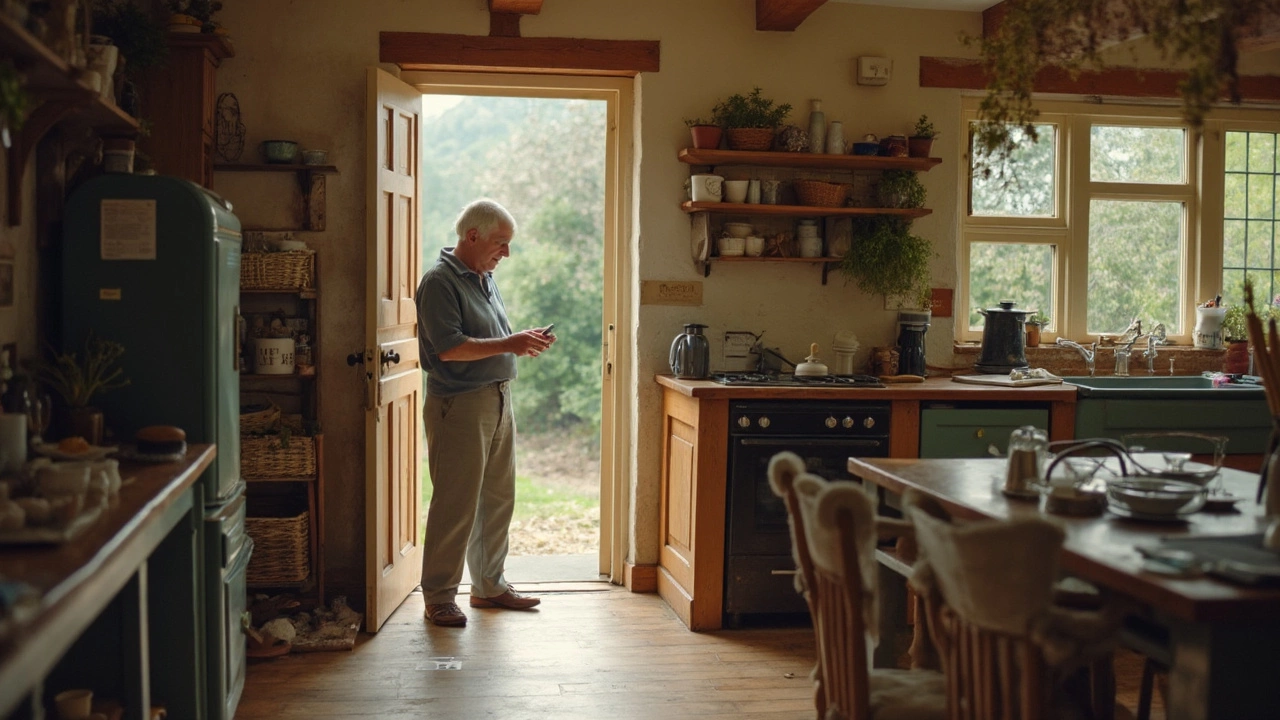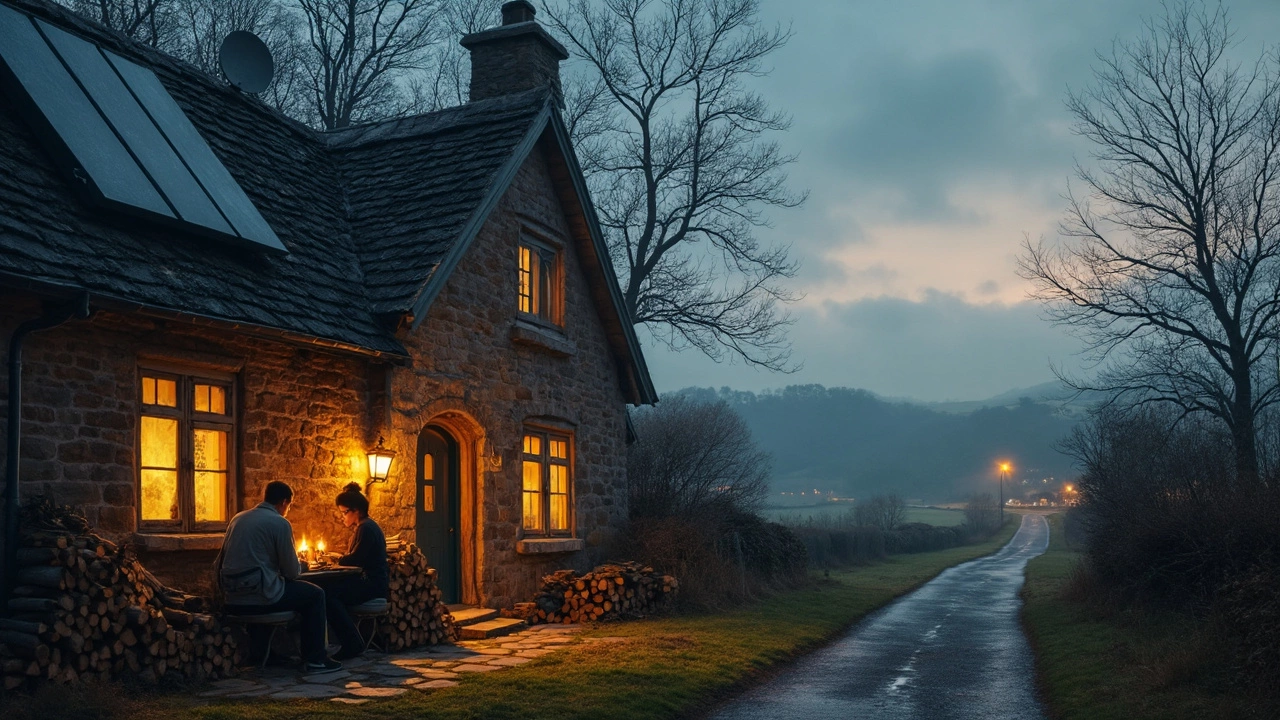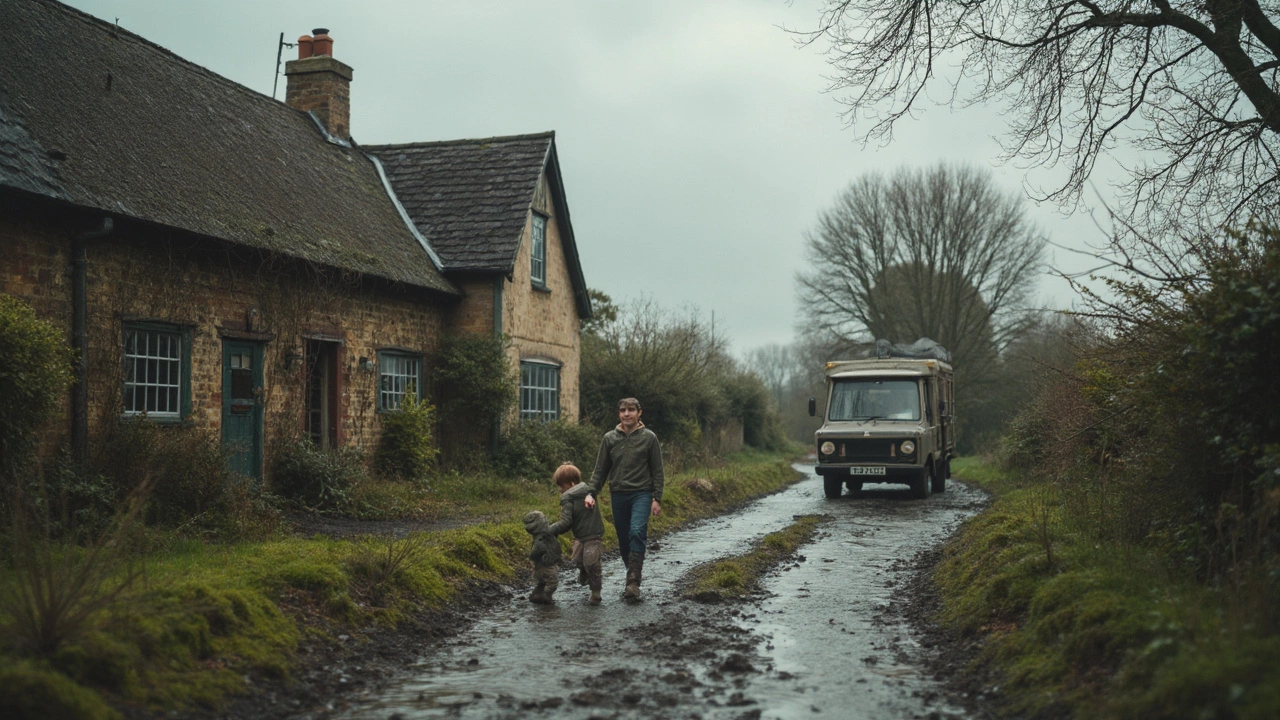When people picture cottage life these days, they usually see cozy fireplaces and wildflower gardens. But can you actually pull off living in a rural cottage in 2025? Spoiler: It’s possible, but rarely as easy as Instagram makes it look.
If you’re considering this route, the very first thing to figure out is what you want. Full-time cottage living isn’t the same as spending weekends there. For one, you’ll have to face the not-so-glam side of things—think pest control instead of vintage teacups. Are you ready for slower internet or heating with a log burner? Will your job allow remote work, or are you stuck with a long commute? These are big questions, and they can quickly kill the daydream if you’re not honest with yourself up front.
The next thing: talk to people who are already living the life. Most don’t sugarcoat it. Seasonal isolation, the quirks of old plumbing, and more expensive food shops are common gripes. But there’s upside, too—peace, loads of space, and sometimes, cheaper real estate.
If the idea of maintaining a garden, clearing snow, and possibly living miles from your nearest neighbor sounds more fun than stressful, cottage life might be in reach. But you’ll need facts, not just hope. So before signing anything, do a deep reality check. Let’s get practical about how you can actually make it work.
- What Life in a Real Cottage Looks Like
- Money Matters: Buying or Renting a Cottage
- Dealing with Modern Needs (Internet, Utilities, Heating)
- Community, Isolation, and Safety
- Tips to Make Cottage Life Work in 2025
What Life in a Real Cottage Looks Like
Living in a cottage, especially outside big cities, isn’t just about sipping tea by the fire. The day-to-day is a mix of freedom and effort. Old cottages look cute but love to spring surprises—think uneven floors, low ceilings, and occasional critters sneaking in. Mold can be a problem in older rural cottages, so regular airing-out and a decent dehumidifier aren’t optional; they’re must-haves.
Most rural cottages have thick stone or brick walls that help keep heat in during winter but make them chilly to warm up at first. Good insulation is rare unless the place has seen a recent upgrade. Modern comforts like fast Wi-Fi were never considered in the original plans. A 2023 survey found that less than 45% of rural homes in the UK actually have decent broadband speeds over 30 Mbps. Video calls or streaming aren’t always smooth, so if remote work is your plan, check internet quality before you fall in love with a place.
The lifestyle is slower. Forget 24/7 convenience. Even the nearest cafe could be a 20-minute drive, so you’ll plan grocery trips and stock up properly. Getting deliveries? Not guaranteed. Weather can leave roads covered in mud or snow for days, especially in winter. Here’s a simple look at the realities:
- Your nearest neighbor could be half a mile away—or more—so expect a lot of quiet.
- Wildlife visits are common. Hedgehogs, deer, and the occasional fox are fun until something raids your bins or digs up the garden.
- Heating usually means log burners, oil tanks, or old-school radiators. Electricity cuts aren’t rare, so a backup torch is smart.
But it’s not all challenges. Many people say waking up to birdsong, not traffic, makes all the work worthwhile. If the peace and slower pace sound good, a cottage lifestyle could fit you. But that storybook coziness? It always comes with real-world effort.
Money Matters: Buying or Renting a Cottage
If you want to start cottage living, you’ll need to look at your wallet first. People expect cottages to be cheaper than city homes, and that's sometimes true—sometimes. Prices swing a lot depending on location, the state of the cottage, and whether there’s much demand nearby. Tiny old places in Scotland, Wales, or parts of rural Ireland can still sell for as little as £90,000, but well-kept, Insta-cute cottages in the South of England or popular tourist regions now fetch well over £400,000.
Renting isn’t always a bargain either. Demand for quiet escapes means small cottages that used to go for £600 a month might now cost double—especially if they’re within commuting distance of a city. Estate agents say there’s a definite spike in costs for properties with any sort of modern upgrade (like central heating or fast broadband—two things you really don’t want to skip).
When buying, factor in hidden costs:
- Basic repairs (leaky roofs, outdated wiring, mystery damp spots)
- Higher insurance premiums (rural homes can be more at risk from flooding or break-ins)
- Heating bills (cottage walls often leak heat, especially in uninsulated stone buildings)
- Travel costs for getting to town, work, or school
If you’re renting, check upfront what’s included. Some landlords cover part of heating or maintenance, but many leave you with the whole bill—firewood, oil, septic tank emptying, you name it.
To get a sense of just how varied the costs can be, here’s a real snapshot from 2025 based on UK rural properties:
| Location | Purchase Price (Avg.) | Monthly Rent (Avg.) |
|---|---|---|
| Cornwall | £350,000 | £1,350 |
| Lake District | £420,000 | £1,600 |
| North Yorkshire | £300,000 | £1,200 |
| Scottish Highlands | £180,000 | £800 |
Bottom line? Budget for more than just the pretty front door. If you want a slice of cottage lifestyle, run your numbers, check real listings, and don’t forget the stuff you can’t see in a sales photo.

Dealing with Modern Needs (Internet, Utilities, Heating)
Moving into a cottage doesn’t mean giving up modern comforts, but you have to work for them. Internet can be your biggest headache, especially if you rely on it for work. Regular broadband just isn’t common in lots of rural spots. As of early 2025, about 21% of UK rural areas still have broadband speeds less than 30 Mbps. Satellite internet like Starlink fills some gaps, but prices can hit £75 a month, and weather sometimes messes with the signal.
For a reliable connection, you want to check internet coverage before you buy or rent. Use a postcode checker (Openreach and Ofcom both have ones online) and don’t believe estate agents who say “broadband available” without proof. Mobile data hotspots help if 4G or 5G signals are decent, but test them with your own phone first.
Utilities are another reality check. Many rural cottages aren’t hooked up to mains gas. That means you’ll end up using oil, LPG tanks, or just sticking with the old fireplace or log stove. Oil and LPG prices shot up in the last few years, and you have to arrange regular deliveries. One tip: Keep your tank filled, especially in winter. Rural roads can get blocked and no one wants to run out in a snowstorm.
Heating is never just “set it and forget it” in a cottage. Think draughty windows, thick stone walls, and rooms that warm up slowly. Many people double up—using electric heaters in bedrooms and wood burners in living spaces. But watch your bills. Old electric heaters burn cash fast. Good insulation (even just plugging draughts and putting up thermal curtains) makes a real, day-to-day difference.
Water can be another surprise. Sometimes it comes from a private well or spring, and you might need to manage a filtration system or test for limescale and other stuff. Septic tanks aren’t just for TV dramas—they need real maintenance every couple of years and can be pricey if left ignored.
- Pro tip: Always ask for last year’s utility bills before committing to a place. This gives you a real sense of what’s normal there—and might help with negotiations.
- Don’t forget: Take meter readings regularly. Leaks and problems are easier to spot early.
- Internet hack: If one service is weak, team up neighbors and push for a group installation. Some providers will offer deals if a few homes sign up together.
| Utility | Common Options | Est. Monthly Cost (2025, UK) |
|---|---|---|
| Internet | Broadband/Satellite/Mobile Hotspot | £35–£90 |
| Heating | Oil/LPG/Wood/Electric | £90–£250 |
| Water | Mains/Private Well | £20–£60 |
So yes, cottage living is possible, but you have to plan ahead for the stuff city folks take for granted. Still, when you get it all working, sipping coffee next to a crackling stove hits different—just keep the router on your windowsill.
Community, Isolation, and Safety
Moving to a rural cottage brings up the three big questions: Who’ll be around, will you feel cut off, and is it safe? Let’s get real—rural neighborhoods just don’t work like cities. Most villages and hamlets have fewer people, often with an older population. The upside? If you strike up a conversation at the local post office or small shop, people tend to remember you. But don’t expect a social calendar packed with events unless you join groups like the village hall committee or local gardening club.
Isolation hits everyone differently. If you need quick access to friends, restaurants, or culture, cottage living can feel lonely. One study in 2023 found that 62% of new rural residents struggled with loneliness in their first year. However, many folks settle in over time by getting involved. Volunteering, backing local causes, or inviting neighbors over for coffee goes a long way to breaking the ice. Pro tip: Bake a batch of cookies and knock on doors when you first move in—old-school, but it works.
On the safety front, break-ins in rural areas are less common than in big cities, but they still happen. According to a 2024 report by UK Crime Stats, rural burglary rates were about 20% lower compared to urban areas, but thefts from garages and garden sheds were higher. If you’ve got a shed or store firewood, lock it up. Fitting basic alarms or even fake cameras can also put off opportunists.
- If you’re far from emergency services, make sure your home is mapped properly for 999 or 112 calls. Some rural addresses aren’t well recognized by digital systems, which could delay help.
- Get to know the nearest neighbors—you’ll look out for each other. It’s normal to swap numbers and sometimes even keys for emergencies.
- Lone cottage at the end of a track? Consider motion-sensor lights and extra door locks for peace of mind.
If you’re used to 24/7 city life, remember that some villages are quiet after dark and services like taxis or food deliveries can be spotty. Simple steps can make cottage living feel safe and welcoming. But you have to be proactive—both with your safety and with making connections, or isolation can sneak up faster than you think.

Tips to Make Cottage Life Work in 2025
Nailing cottage living in 2025 is way more about preparation than wishful thinking. If you want your rural dream to feel less like a struggle and more like freedom, you’ll need real strategies, not just pretty ideas.
- Sort your heating and insulation first. Most older cottages suck at holding heat. Double check the windows, look for drafts, insulate the roof, and get your heating system serviced before winter hits. Heat pumps are super popular now, and solar panels can cut those energy bills down, but always ask locals what works best for your area’s crazy temps.
- Internet matters more than you’d think. Even if you’re chasing offline peace, trust me, you’ll want good Wi-Fi for work, shopping, or just catching a break. In 2024, UK government data showed only 81% of rural homes had reliable broadband. Check with neighbors what actually works. Sometimes you’ll need 4G routers or even satellite internet like Starlink.
- Get friendly with your neighbors—fast. Knowing the folks nearby can save your bacon. Seriously, if a storm hits or your power goes out, rural help is usually neighbor-to-neighbor. Plus, locals have the inside scoop on repairs and the best suppliers.
- Sort your transport early. Public transport is usually thin or non-existent. If you don’t drive, cottage life gets tough quickly. Keep your car in shape and invest in good winter tires if your area snows. Some families even keep a basic emergency kit with food, water, and a backup charger for those times you get snowed in or the power drops for a few hours.
- Plan your shops and deliveries. Food and online orders often take days longer than in cities. Many cottagers bulk-buy basics, grow veggies, or set up regular delivery slots for groceries and meds. Amazon is great, but don’t count on next-day shipping in every postcode.
- Respect nature—but also pests. Mice, wasps, and even the odd bat are just part of rural cottages. Sealing cracks, checking roofs, and knowing where pest control is saves a load of hassle (and sometimes your sanity).
Here’s a super quick look at what people stress about most, based on a 2024 survey of rural homeowners in England:
| Biggest Challenge | % of Cottage Owners |
|---|---|
| Rising Energy Costs | 46% |
| Slow Broadband | 35% |
| Transport Issues | 29% |
| Pest Problems | 19% |
So yeah, the dream of cottage lifestyle is still alive—but it’s not all wildflowers and warm bread. Get practical, plan like a pro, and you can absolutely make it work—even in 2025.
